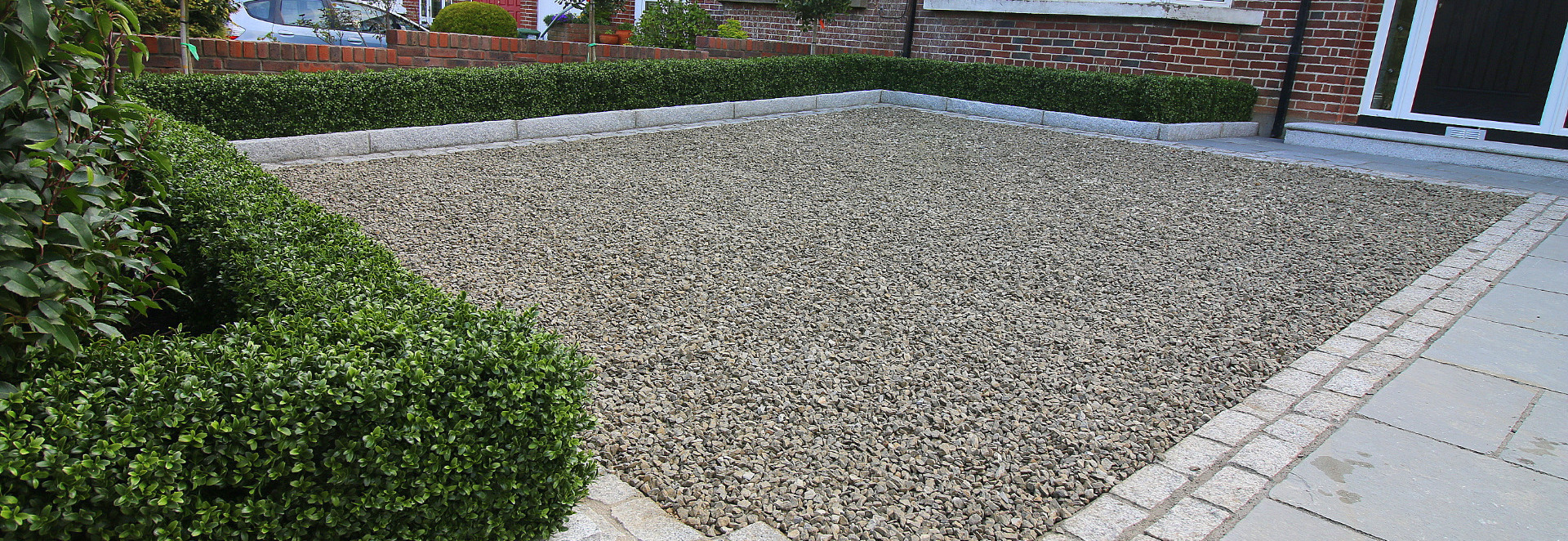Driveway Design Tips | Creating a practical layout with appealing results
Posted on 3rd June 2020 at 11:21
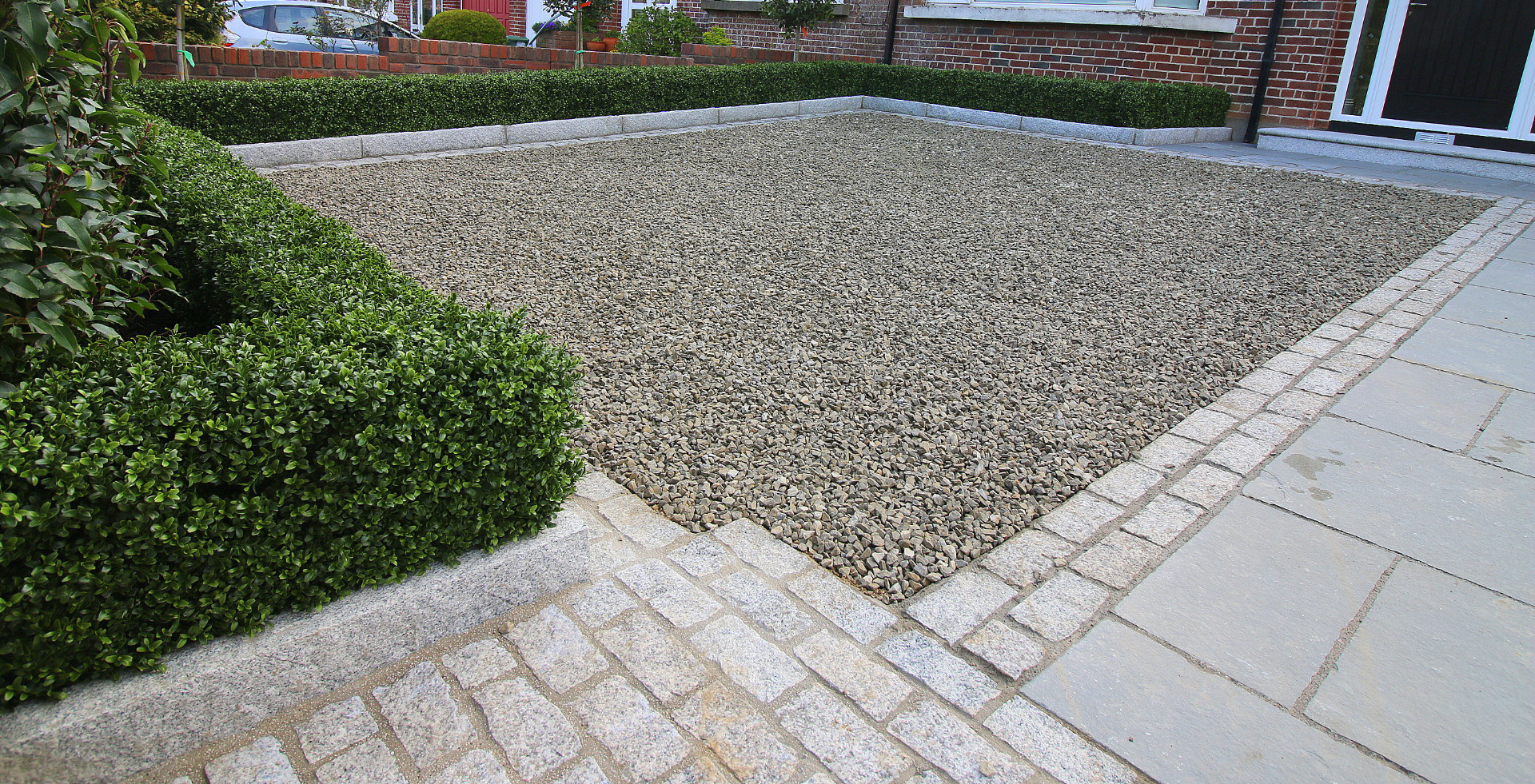
The ubiquitous front garden has been replaced by the equally ubiquitous driveway. Front garden spaces, once rich in features including lush lawns, boastful colourful borders, stand out specimen trees etc have each succumbed to the ever growing demand and need to provide space for car parking. Getting the balance right is at the core of modern driveway design.
The relentless growth trends in private car ownership are matched only by ever decreasing capacity in off street car parking spaces which has seen many traditional front gardens being replaced by driveways. For many old and especially gardens, this trend is so dramatic, that for the most part, front gardens have become driveways with barely enough space to meet owner demands for car parking and very little else.
But for many home/car owners it doesn’t need to be like this. It is possible with some careful planning and creative thinking to develop the front garden which meets the demands of not only the ‘driveway’ but to also create a well planted garden space rich in colour, range and maintainable.
The critical design challenge for good driveway design is spatial layout in which sufficient space is allocated for safe and practical car parking but also proportionately an adequate amount of space for the softer planted elements.
Another design aspect is the orientation of the various spaces (driveway, lawn, planted borders etc), there are many ways to define each space, some owners may prefer the more formal (‘linear’) layout, in contrast some may opt for a softer layout featuring short or gentle curves, a more rounded treatment of the individual areas. The more interesting the layout the more appealing the overall results will be.
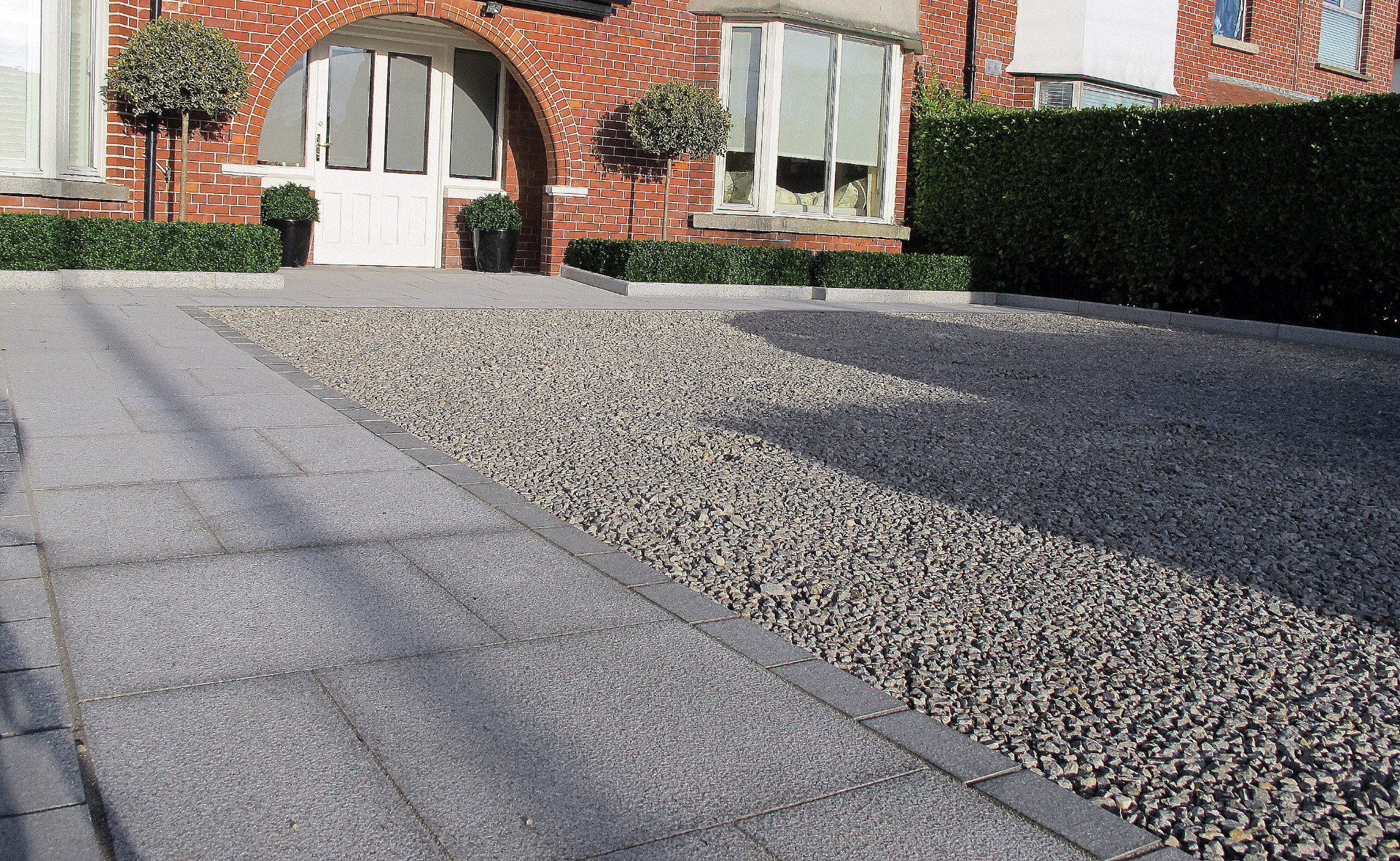
When it comes to allocating space for planted borders, the wider the better. Traditionally planted borders would typically range from 900mm (3 feet) to 1.8m (6 feet) deep and sometimes more. The inevitable lack of space leading to a great loss in size of lawn area also impacts the potential space for perimeter planted borders. Here too the pressure on space is significant, for example to grow and sustain a reasonable perimeter hedge will require a minimum of 0.6m but 0.9m would be better. To provide and space scope for a combined hedge and ornamental planting scheme will require a minimum border depth of 1.5m. Where space is plentiful, calculating the amount of space each area requires is generally easier and straight forward.
Planting schemes warrant special consideration, choose plants careful, matching height and spread characteristics to the space available will not only provide better visual results, but also dramatically reduce the maintenance requirements. How often do we see plants overgrown or outgrowing spaces and the inevitable onerous task of regular cutting/pruning. Choose plants carefully, not only saves on maintenance but will probably save on costs too. Whilst some may wish to approach selection with restraint, others prefer a much diversified selection. Often restricting the ornamental plant selections to three varieties can be very effective with the repeat pattern providing a harmonious display.
Probably the single and most demanding decision to make is the choice of driveway surface. Never has there been so an abundance of choice: natural stone, gravel/stone chippings and other man-made finishes. Often the choice of colour can be a deciding factor in selecting the preferred driveway surface finish. When it comes to natural stone paving, there are so many options available: type (limestone, sandstone, granite), size, shape, thickness, hand cut/machine cut, colour, textured, calibrated/uncalibrated, whatever you prefer, a few things are worth bearing in mind.
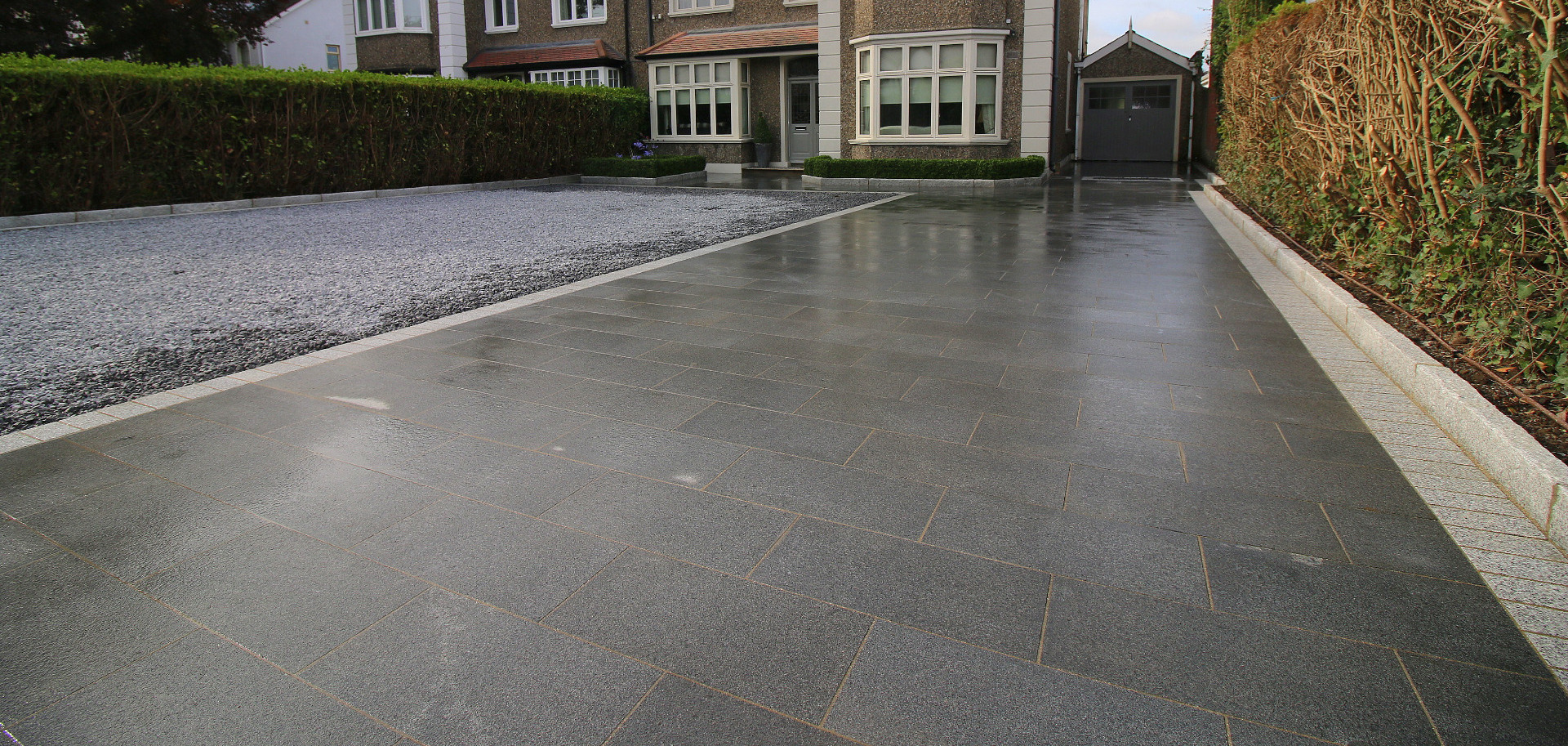
Natural stone with lighter hues may look warm and appealing, but many will succumb to becoming more easily discoloured by car tyres. Similarly in shaded areas, greening can be a problem and this discolouration is more likely to occur during the damp winter months. All this will result in lighter hues requiring more regular maintenance/ power washing. In contrast neutral greys are a more durable and harder wearing surface colour which not only contrasts well with other elements (lawns, planted borders) but requires considerably less maintenance than the paler alternatives.
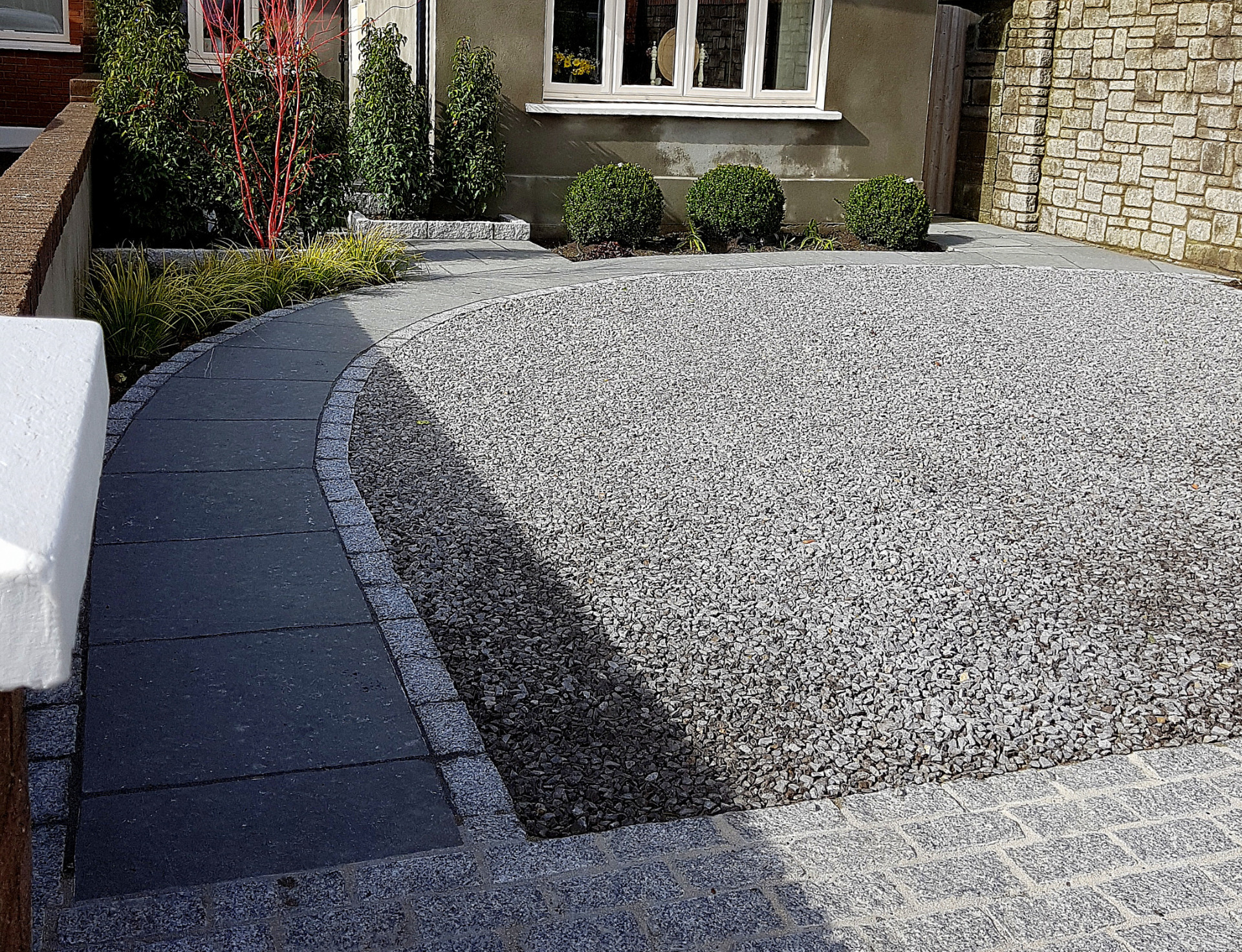
Probably the main reasons for the popularity of loose stone (two types chipped and rounded) surfaces are ease of installation and the most economical option available. As chipped stones are more easily compacted this helps to provide more stability making them more suitable for driveway areas than what would be possible with rounded pebble stone. The latter is best used in spaces where foot/car traffic is very limited but best used in ornamental areas. Both types are available in a range of sizes from 5mm – 25mm, the smaller sizes are easier to walk on but very small might stick to shoes (risk of scratching timber floors in entrance hallway), generally 14mm – 17mm would be the most popular sizes. Another factor to consider is wheeling a baby buggy /wheelie waste bin can be challenging, which is why one would include a paved pathway in loos e stone driveways. Another limitation is loose stone surfaces are not suitable for use on ground with a noticeable gradient. Even level ground with loose stone chippings will require an occasional rake to retain a neat and flat appearance.
Garden lighting is also a good addition to most front gardens or driveways. Bollard lighting is best for lighting parking areas and garden spike spots for lighting planted areas. Both are available with LED lamps to provide safe, reliable and inexpensive lighting results.
Tagged as: Driveway Design & Landscaping, Driveway Design Churchtown, Driveway Design Rathfarnham, Driveway Design Terenure, Driveways Dublin Tips
Share this post:

